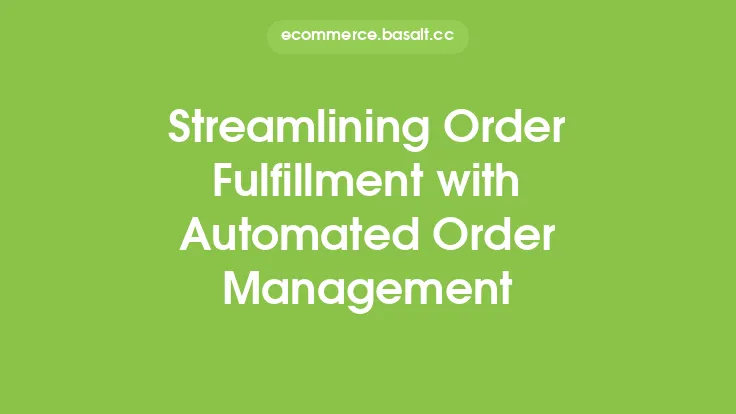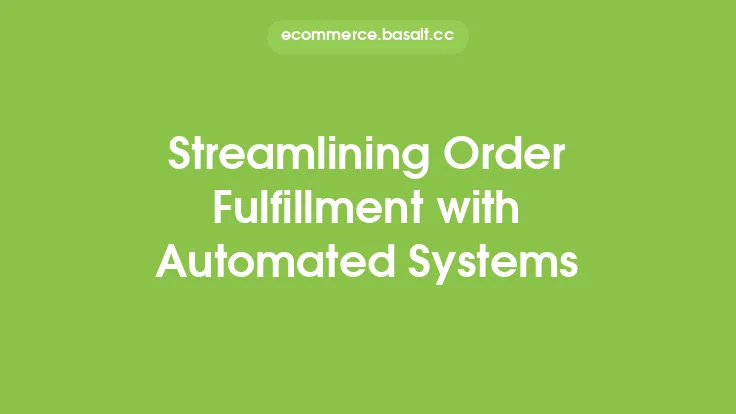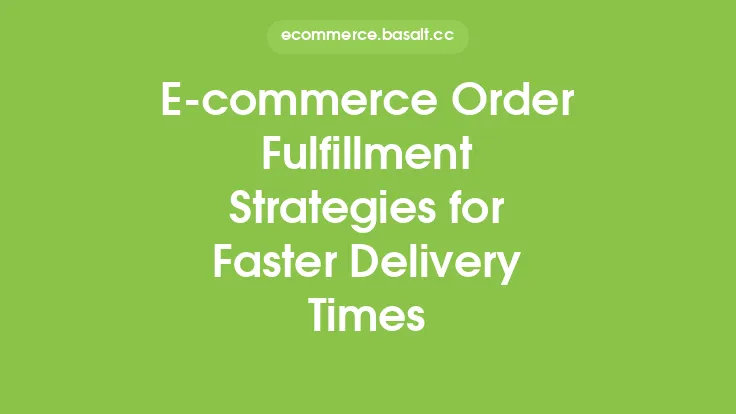In today's fast-paced e-commerce landscape, efficient supply chain operations are crucial for businesses to stay competitive. With the rise of same-day and next-day delivery options, customers expect their orders to be fulfilled quickly and accurately. Streamlining supply chain operations is essential to meet these expectations and ensure customer satisfaction. In this article, we will explore the strategies and best practices for streamlining supply chain operations to achieve faster order fulfillment.
Introduction to Supply Chain Streamlining
Streamlining supply chain operations involves analyzing and optimizing each stage of the supply chain, from procurement to delivery, to eliminate inefficiencies and reduce lead times. This can be achieved by implementing process improvements, leveraging technology, and collaborating with suppliers and logistics partners. By streamlining supply chain operations, businesses can reduce costs, improve inventory management, and increase customer satisfaction.
Analyzing Supply Chain Inefficiencies
To streamline supply chain operations, it's essential to identify areas of inefficiency. This can be done by mapping out the entire supply chain, from raw material sourcing to delivery, and analyzing each stage for potential bottlenecks. Common areas of inefficiency include inventory management, transportation, and warehouse operations. By identifying these areas, businesses can develop targeted strategies to address them and improve overall supply chain efficiency.
Implementing Process Improvements
Implementing process improvements is a critical step in streamlining supply chain operations. This can include strategies such as just-in-time inventory management, which involves ordering and receiving inventory just in time to meet customer demand. Other process improvements include implementing a first-in, first-out (FIFO) inventory system, which ensures that older inventory is sold or used before newer inventory. Additionally, businesses can implement lean manufacturing principles, which aim to minimize waste and maximize efficiency in production processes.
Leveraging Technology for Supply Chain Optimization
Technology plays a vital role in streamlining supply chain operations. Enterprise resource planning (ERP) systems, for example, can help businesses manage inventory, track orders, and optimize production processes. Transportation management systems (TMS) can help businesses optimize transportation routes and reduce shipping costs. Additionally, businesses can leverage data analytics and machine learning algorithms to forecast demand, predict supply chain disruptions, and optimize inventory levels.
Collaborating with Suppliers and Logistics Partners
Collaboration with suppliers and logistics partners is essential for streamlining supply chain operations. Businesses can work with suppliers to implement just-in-time inventory management, for example, or collaborate with logistics partners to optimize transportation routes. By building strong relationships with suppliers and logistics partners, businesses can improve communication, reduce lead times, and increase supply chain efficiency.
Optimizing Warehouse Operations
Warehouse operations are a critical component of supply chain operations. To optimize warehouse operations, businesses can implement strategies such as warehouse management systems (WMS), which help manage inventory, track orders, and optimize warehouse space. Additionally, businesses can implement pick-to-light or pick-to-voice systems, which help warehouse staff quickly and accurately pick and pack orders. By optimizing warehouse operations, businesses can reduce lead times, improve inventory accuracy, and increase customer satisfaction.
Implementing Drop Shipping and Cross-Docking
Drop shipping and cross-docking are two strategies that can help businesses streamline supply chain operations. Drop shipping involves shipping products directly from the supplier to the customer, eliminating the need for warehouse storage. Cross-docking involves receiving products from suppliers and immediately shipping them to customers, without storing them in a warehouse. By implementing these strategies, businesses can reduce inventory costs, improve delivery times, and increase customer satisfaction.
Measuring Supply Chain Performance
To ensure that supply chain operations are running efficiently, businesses must measure supply chain performance. Key performance indicators (KPIs) such as order fulfillment rates, inventory turnover, and shipping times can help businesses identify areas for improvement. By tracking these KPIs, businesses can make data-driven decisions to optimize supply chain operations and improve customer satisfaction.
Conclusion
Streamlining supply chain operations is essential for businesses to stay competitive in today's fast-paced e-commerce landscape. By analyzing supply chain inefficiencies, implementing process improvements, leveraging technology, collaborating with suppliers and logistics partners, optimizing warehouse operations, and implementing drop shipping and cross-docking, businesses can reduce lead times, improve inventory management, and increase customer satisfaction. By measuring supply chain performance and making data-driven decisions, businesses can ensure that their supply chain operations are running efficiently and effectively, leading to long-term success and growth.





